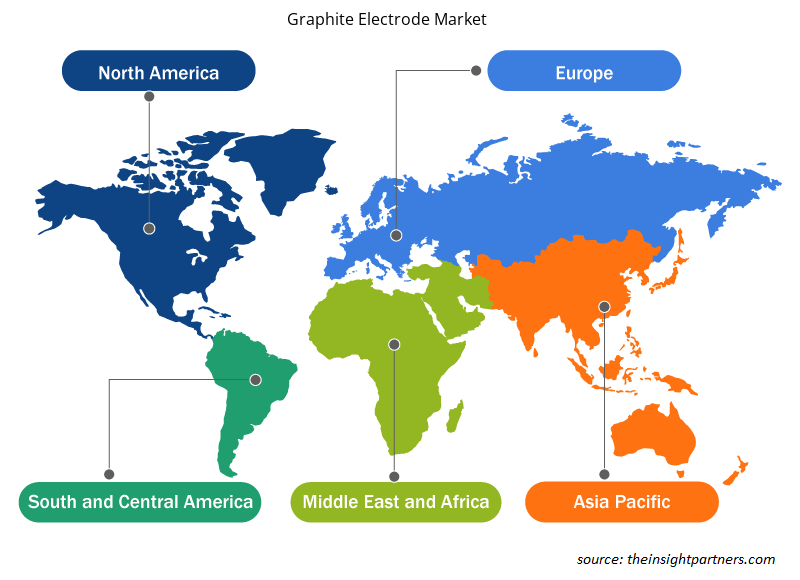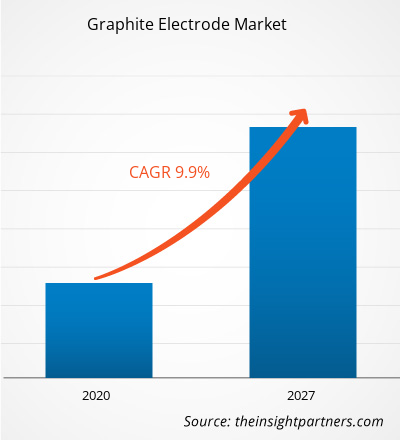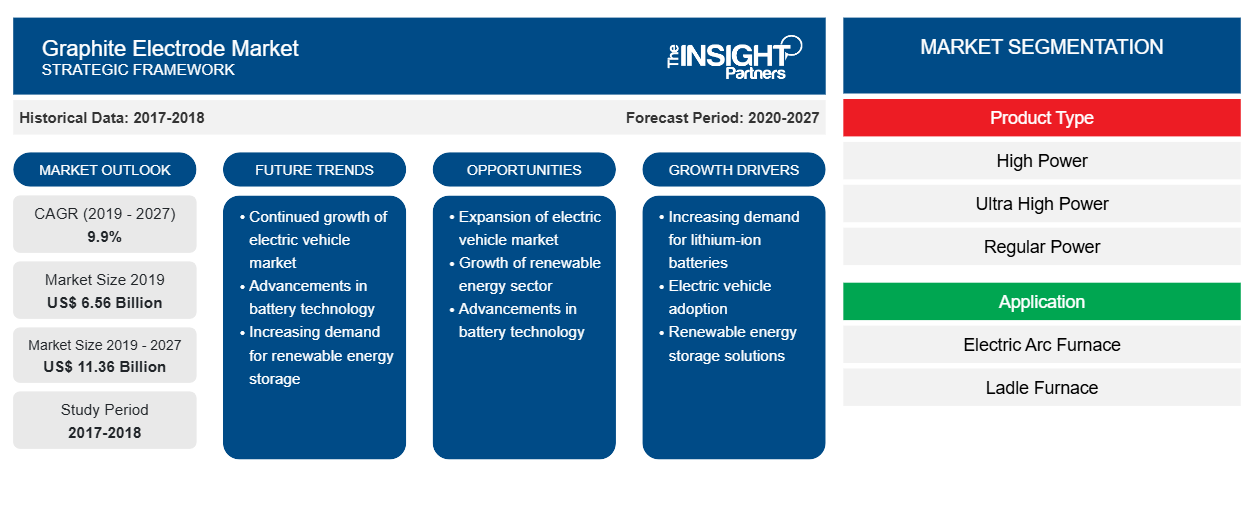[研究报告] 从收入来看,2019 年石墨电极市场价值为 65.642 亿美元,预计到 2027 年将达到 113.564 亿美元,2020 年至 2027 年的复合年增长率为 9.9%。
全球石墨电极市场以亚太地区为主,占全球石墨电极市场的约 58% 。这些国家对石墨电极的高需求归因于粗钢产量的急剧上升。根据世界钢铁协会的数据,2018 年,中国和日本分别生产了 9.283 亿吨和 1.043 亿吨粗钢。在亚太地区,由于中国废钢增加和电力供应增加,电弧炉的需求很大。亚太地区各公司不断发展的市场战略正推动该地区石墨电极市场的增长。例如,日本公司东海碳素株式会社以 1.5 亿美元收购了 SGL GE Holding GmbH (SGL GE) 的石墨电极业务。
欧洲各主要国家的政府一直在采取各种举措来推动其制造业、电子和半导体等行业的发展。欧洲通过工业 4.0 计划显著升级了其工业解决方案。欧盟委员会正致力于增加研发资金,以增强该地区制造业和其他行业在世界上的竞争力。石墨电极的需求与电弧炉炼钢直接相关,该地区是世界上最重要的钢铁生产国之一,俄罗斯是最大的钢铁生产国。
定制此报告以满足您的需求
您可以免费定制任何报告,包括本报告的部分内容、国家级分析、Excel 数据包,以及为初创企业和大学提供优惠和折扣
- 获取此报告的关键市场趋势。这个免费样品将包括数据分析,从市场趋势到估计和预测。
COVID-19 疫情对石墨电极市场的影响
根据世界卫生组织 (WHO) 的最新情况报告,美国、印度、西班牙、意大利、法国、德国、英国、俄罗斯、土耳其、巴西、伊朗和中国是受 COVID-19 疫情影响最严重的国家。疫情于 2019 年 12 月首先在武汉 (中国) 爆发,此后迅速蔓延至全球。COVID-19 危机正在影响全球各行各业,预计全球经济将在 2020 年受到最严重的打击,并可能在 2021 年受到最严重的打击。疫情给钢铁行业造成了重大破坏。国际贸易的急剧下降对石墨电极的增长产生了负面影响。为应对和控制疫情而实施的生产停工、供应链限制、采购管理、劳动力短缺和边境封锁对建筑业产生了不利影响。建筑行业生产放缓直接影响了各种钢铁产品的采用,从而影响了石墨电极市场。
市场洞察
中国钢铁行业转型支撑石墨电极市场增长
2016 年和 2017 年,由于政府努力控制国内供应过剩,政策驱动的中频炉潜力被削弱,中国钢铁行业格局因此发生变化。根据 worldsteel.org 的数据,电弧炉和碱性氧气转炉 (BOF) 钢厂的废钢消耗量创下了每年超过 2 亿公吨的记录。与此同时,由于政府法规限制重点地区综合钢厂的发电量,并鼓励用电弧炉产能大力替代这些钢厂,中国的电弧炉产能创下了每年 1.3 亿公吨的新高。这促进了电弧炉钢的生产,从而促进了石墨电极市场的增长。
基于产品类型的洞察
就产品类型而言,超高功率部分在 2019 年占据了全球石墨电极市场的最大份额。超高功率石墨电极用于电弧炉 (EAF) 行业的钢铁回收。其主要成分是高价值针状焦,由石油或煤焦油制成。石墨电极呈圆柱形,两端均有螺纹区域。这样,可以使用电极接头将石墨电极组装成电极柱。为了满足更低成本和更高工作效率的要求,大容量超高功率电弧炉越来越受欢迎。因此,超高功率石墨电极预计将占据石墨电极市场的大部分份额。此外,该细分市场预计将见证石墨电极市场中最高的复合年增长率。
基于应用的洞察
根据应用,石墨电极市场细分为电弧炉、钢包炉和其他。预计在预测期内,电弧炉部分将以最高的复合年增长率增长。石墨电极是通过电弧炉 (EAF) 方法和钢包炉钢净化生产钢铁不可或缺的组成部分。石墨电极还用于生产非钢黑色金属、铁合金、硅金属和黄磷。石墨电极是电弧炉钢铁生产中不可或缺的消耗品,但需要的数量非常少;一吨钢铁生产只需要约 1.7 公斤石墨电极。该部分占整个石墨电极市场的 80% 以上份额。
石墨电极市场高度整合,只有少数参与者主导石墨电极市场。以下列出了石墨电极市场的一些最新发展:
2020:Tokai Carbon 和 Tokai COBEX 完成了对碳和石墨制造商 Carbone Savoie International SAS 的收购。
2020:GrafTech International Ltd. 董事会批准在公开市场回购高达 1 亿美元的公司普通股 2019
:Showa Denko (SDK) 完成了对石墨电极生产公司 SGL GE Holding GmbH 全部股份的收购。收购后,公司名称更改为 SHOWA DENKO CARBON Holding GmbH。
石墨电极市场区域洞察
Insight Partners 的分析师已详细解释了预测期内影响石墨电极市场的区域趋势和因素。本节还讨论了北美、欧洲、亚太地区、中东和非洲以及南美和中美洲的石墨电极市场细分和地理位置。

- 获取石墨电极市场的区域特定数据
石墨电极市场报告范围
| 报告属性 | 细节 |
|---|---|
| 2019 年市场规模 | 65.6亿美元 |
| 2027 年市场规模 | 113.6亿美元 |
| 全球复合年增长率(2019 - 2027) | 9.9% |
| 史料 | 2017-2018 |
| 预测期 | 2020-2027 |
| 涵盖的领域 | 按产品类型
|
| 覆盖地区和国家 | 北美
|
| 市场领导者和主要公司简介 |
|
石墨电极市场参与者密度:了解其对业务动态的影响
石墨电极市场正在快速增长,这得益于终端用户需求的不断增长,而这些需求又源于消费者偏好的不断变化、技术进步以及对产品优势的认识不断提高等因素。随着需求的增加,企业正在扩大其产品范围,进行创新以满足消费者的需求,并利用新兴趋势,从而进一步推动市场增长。
市场参与者密度是指在特定市场或行业内运营的企业或公司的分布情况。它表明在给定市场空间中,相对于其规模或总市场价值,有多少竞争对手(市场参与者)存在。
在石墨电极市场运营的主要公司有:
- EPM 集团
- 格拉夫泰克国际有限公司
- 印度石墨有限公司
- 恒基集团有限公司
- 开封炭素有限公司
免责声明:上面列出的公司没有按照任何特定顺序排列。

- 了解石墨电极市场主要参与者概况
市场细分
石墨电极市场 – 按产品类型
- 高功率
- 超高功率
- 常规电源
石墨电极市场 – 按应用
- 电弧炉
- 钢包炉
- 其他的
石墨电极市场(按地区)
北美
- 我们
- 加拿大
- 墨西哥
欧洲
- 法国
- 德国
- 意大利
- 英国
- 俄罗斯
- 欧洲其他地区
亚太地区 (APAC)
- 中国
- 印度
- 韩国
- 日本
- 澳大利亚
- 亚太地区其他地区
中东和非洲 (MEA)
- 南非
- 沙特阿拉伯
- 阿联酋
- MEA 其他地区
南美洲 (SAM)
- 巴西
- 阿根廷
- SAM 其余部分
石墨电极市场公司简介如下:
- EPM 集团
- 格拉夫科技国际有限公司
- 印度石墨有限公司
- 河北省海格集团有限公司
- 中平能源化工集团开封炭素有限公司
- 南通扬子炭素有限公司
- 日本碳素株式会社
- 圣格拉夫国际
- 日本昭和电工株式会社
- 东海碳素株式会社
- 历史分析(2 年)、基准年、预测(7 年)及复合年增长率
- PEST和SWOT分析
- 市场规模、价值/数量 - 全球、区域、国家
- 行业和竞争格局
- Excel 数据集
近期报告
客户评价
购买理由
- 明智的决策
- 了解市场动态
- 竞争分析
- 客户洞察
- 市场预测
- 风险规避
- 战略规划
- 投资论证
- 识别新兴市场
- 优化营销策略
- 提升运营效率
- 顺应监管趋势





















 获取免费样品 - 石墨电极市场
获取免费样品 - 石墨电极市场